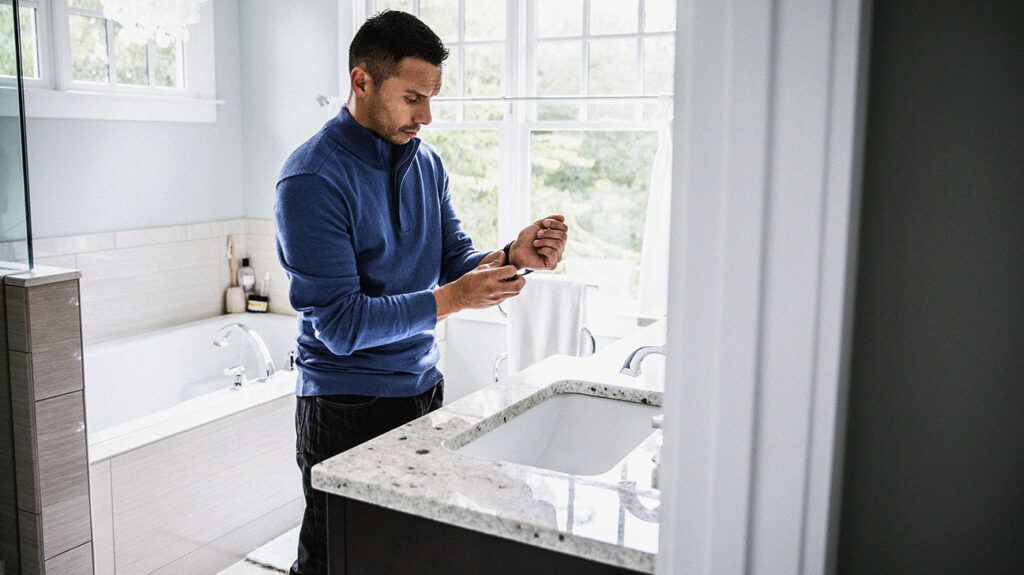A prostate exam typically involves a digital rectal examination (DRE). During a DRE, a doctor feels the prostate gland by inserting a gloved, lubricated finger into the rectum. This examination does not require the rectum to be empty.
Prostate exams are a typical part of an annual physical for males. They can help detect prostate issues such as enlarged prostate or prostate cancer.
Unlike a colonoscopy, a prostate exam or DRE does not require preparation. The rectum does not need to be empty for this routine examination.
This article takes a closer look at whether or not someone needs to poop before a prostate exam.
A note about sex and gender
Sex and gender exist on spectrums. This article will use the terms “male,” “female,” or both to refer to sex assigned at birth. Click here to learn more.

It is unnecessary to poop before a prostate exam. However, some people may choose to do so for personal comfort.
The
However, if having a bowel movement beforehand makes a person feel more comfortable and at ease, it is fine to do so. People should be as relaxed as possible during the exam for comfort and ease of examination.
What happens if a person has to poop during a prostate exam?
If someone feels the urge to poop during a prostate exam, they can inform the healthcare professional performing the exam. This is a natural response, as a DRE
Healthcare professionals understand that this can happen. They may pause the examination to allow the person to use the restroom, or they might provide guidance on how to relax and reduce the urge to go.
Preparing for a prostate exam is relatively straightforward. There are typically no special instructions for someone to follow unless a doctor directs.
The following may help a person prepare for their appointment and prostate exam:
- Learn about the procedure: Knowing what to expect may help alleviate anxiety.
- Discuss concerns and medications: Before the exam, people can ask any questions or raise concerns they may have with the doctor. They should also advise them of any medications they are taking.
- Eat as usual: There is no need to eat a special diet before a DRE. People can eat and drink as they usually would unless a doctor recommends otherwise.
- Arrive early: People can arrive a bit early for the appointment to fill out any necessary paperwork and to have a moment to relax before the exam.
Prostate exams involve the following:
- Preparation: The healthcare professional will usually ask the person to undress from the waist down and give them a gown for comfort and privacy.
- Positioning: The person may need to stand and bend forward at the waist, lie on their side with knees drawn up to the chest, or lie on an examination table in the fetal position.
- Glove and lubrication: The healthcare professional will wear a glove and apply lubricant to their finger.
- Insertion of finger: The healthcare professional gently inserts the lubricated, gloved finger into the rectum.
- Examination of the prostate: The healthcare professional feels the prostate, which is located just in front of the rectum, for any abnormalities in size, shape, or texture.
- Duration: The examination is usually brief.
- Discussion: After the exam, the healthcare professional may discuss any findings and next steps, such as further testing if necessary.
What does a prostate exam feel like?
Most people report feeling a sensation of pressure rather than pain during a DRE. The pressure on the prostate can create a sensation similar to the need to urinate or have a bowel movement.
Some people may experience discomfort, especially if there is an existing issue such as an enlarged prostate or prostatitis. The discomfort or unusual sensations are typically brief, as the exam is short.
A prostate exam is a quick and safe procedure with minimal after-effects.
Rarely, there may be a small amount of bleeding from the rectum,
Feelings of embarrassment or anxiety related to the exam are common but typically fade quickly.
Other diagnostic tests that a doctor
- CT scans
- MRI
- MRI fusion biopsy
- PCA3 test
- prostate biopsy
- prostate-specific antigen (PSA) test
- transrectal ultrasound
Males with an
Men at higher risk, including African American males and those with a family history of prostate cancer, need to consider earlier screening at around age 40–45.
Different health organizations have slightly varying guidelines.
For instance, the
If the results are typical, the healthcare professional may recommend routine follow-up screenings at intervals according to age, risk factors, and medical history. Continued monitoring
A suspicious lump on DRE does not always mean cancer. It
If a person’s DRE results are atypical, their doctor may refer them for further diagnostic tests.
It is not medically necessary to have a bowel movement before a prostate exam. The rectum does not need to be empty for the exam.
Some people might prefer to empty their bowels beforehand for personal comfort, but this comes from individual preference rather than a medical need.
Healthcare professionals can perform the exam effectively whether or not a person has had a bowel movement.
